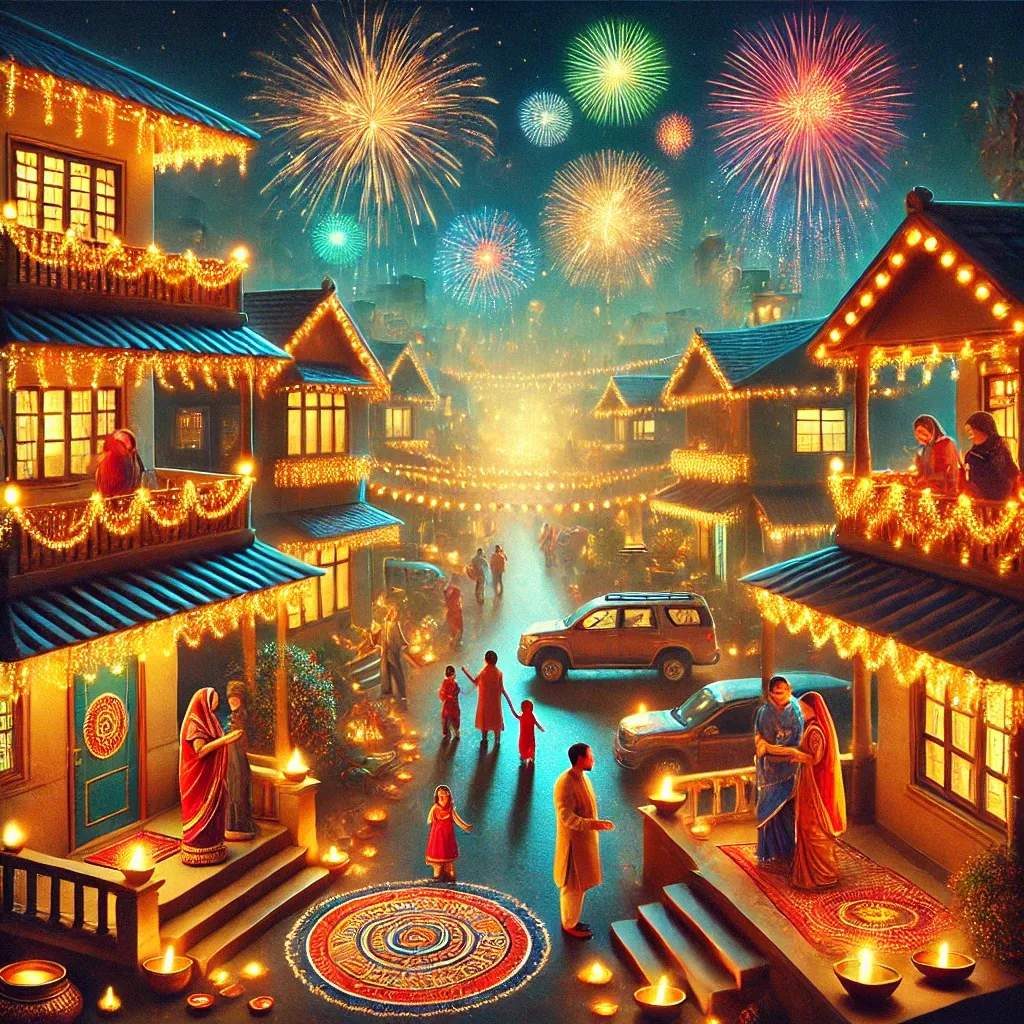The Diwali Festival is a radiant celebration that lights up hearts and homes alike. Why does Diwali hold such meaning across cultures, and what makes its traditions so cherished? Discover why this “Festival of Lights” captures the essence of togetherness, joy, and spiritual illumination.
Diwali Festival Period
Diwali’s timing reflects an essential element of its charm, traditionally celebrated over five days with each day representing a unique cultural significance. Rooted in the Hindu lunisolar calendar, the Diwali period typically falls between October and November, depending on the lunar phase. This festival aligns with the Hindu month of Kartika, symbolizing the triumph of light over darkness and good over evil. Diwali holds such universal appeal that its celebration spans beyond religious lines, marking the New Year for many Indian communities worldwide.This period is marked by various preparatory rituals. Families start with deep-cleaning their homes, symbolizing spiritual renewal. Shops fill with vibrant décor, sweets, and lights, ready for the influx of eager shoppers. Streets and temples are adorned with diyas (oil lamps), colorful lights, and intricate rangoli designs on doorsteps, welcoming prosperity and good fortune.
- The five days include:
- Dhanteras: Marking prosperity and health, families buy precious metals like gold.
- Naraka Chaturdashi: Known as Choti Diwali, a day symbolizing the triumph of good.
- Lakshmi Puja: The primary day of Diwali when goddess Lakshmi is honored.
- Govardhan Puja: A day of gratitude for Krishna’s protection.
- Bhai Dooj: Celebrating the bond between siblings.
By honoring these traditions, each day reinforces Diwali’s spiritual meaning, creating a time to connect with loved ones and celebrate prosperity.
Diwali Festival Food
One of Diwali’s great joys is the variety of delicious food that characterizes this celebration. Sweets and snacks are at the heart of the festival, offering a true taste of Indian culture. These foods represent a variety of regional flavors, and each dish embodies the creativity and warmth associated with Diwali. Families prepare traditional treats, with recipes often passed down through generations, preserving a legacy of flavors and techniques.On Diwali, sweets or “mithai” are given as tokens of affection and good wishes. Common treats include ladoos, barfis, and jalebis, often made with ghee, milk, and sugar. These ingredients symbolize prosperity and are enjoyed by people of all ages. Alongside sweets, savory snacks like samosas and chivda are also popular, creating a balanced festive spread. Additionally, some households prepare full meals with dishes like biryani, dal makhani, and naan, adding a rich and hearty dimension to the celebration.
- Popular Diwali sweets:
- Ladoo: A round, sweet treat made from gram flour, sugar, and ghee.
- Barfi: Fudge-like squares with flavors such as pistachio or coconut.
- Jalebi: A crispy, syrup-drenched dessert often enjoyed hot.
- Kheer: A creamy rice pudding flavored with cardamom and saffron.
- Gulab Jamun: Soft dough balls soaked in sweet syrup.
Diwali’s food traditions connect communities through shared flavors and recipes, creating memories that linger long after the festival has ended.
Diwali Festival Pollution
With all its beauty, Diwali brings a crucial conversation about pollution, especially due to the tradition of fireworks. In recent years, the environmental impact has led to awareness and measures to reduce pollution. The traditional bursting of firecrackers, though symbolically intended to ward off evil spirits, has led to high levels of air and noise pollution, affecting public health and animal welfare. To protect the environment, many people are now opting for eco-friendly celebrations that maintain the essence of Diwali without compromising the planet.Some eco-conscious options include using “green crackers,” which are designed to produce less sound and smoke, and switching from traditional fireworks to LED lights and laser shows. Additionally, biodegradable decorations like clay diyas and natural rangoli colors have gained popularity, providing a sustainable way to celebrate.
- Steps for an eco-friendly Diwali:
- Use green crackers: These reduce emissions significantly compared to traditional firecrackers.
- Opt for LED lights: LED lights conserve energy and reduce carbon footprints.
- Choose clay diyas: Biodegradable and reusable, clay diyas are a sustainable option.
- Limit paper waste: Use reusable decorations to cut down on single-use paper.
- Engage in community celebrations: Centralized fireworks reduce individual pollution impact.
By adopting these mindful practices, Diwali can continue as a celebration of light without leaving a shadow on the environment.
Conclusion
Diwali, a festival of light, love, and shared memories, reflects humanity’s universal need for hope and joy. This celebration’s enduring appeal across time and cultures lies in its symbolism of light overcoming darkness, inspiring people worldwide to gather, celebrate, and cherish their blessings. As Mahatma Gandhi said, “Be the change you want to see in the world,” and this sentiment echoes in today’s Diwali celebrations as people choose sustainable, heartfelt ways to celebrate. With mindful practices, Diwali continues to inspire unity, joy, and a brighter future for all.






